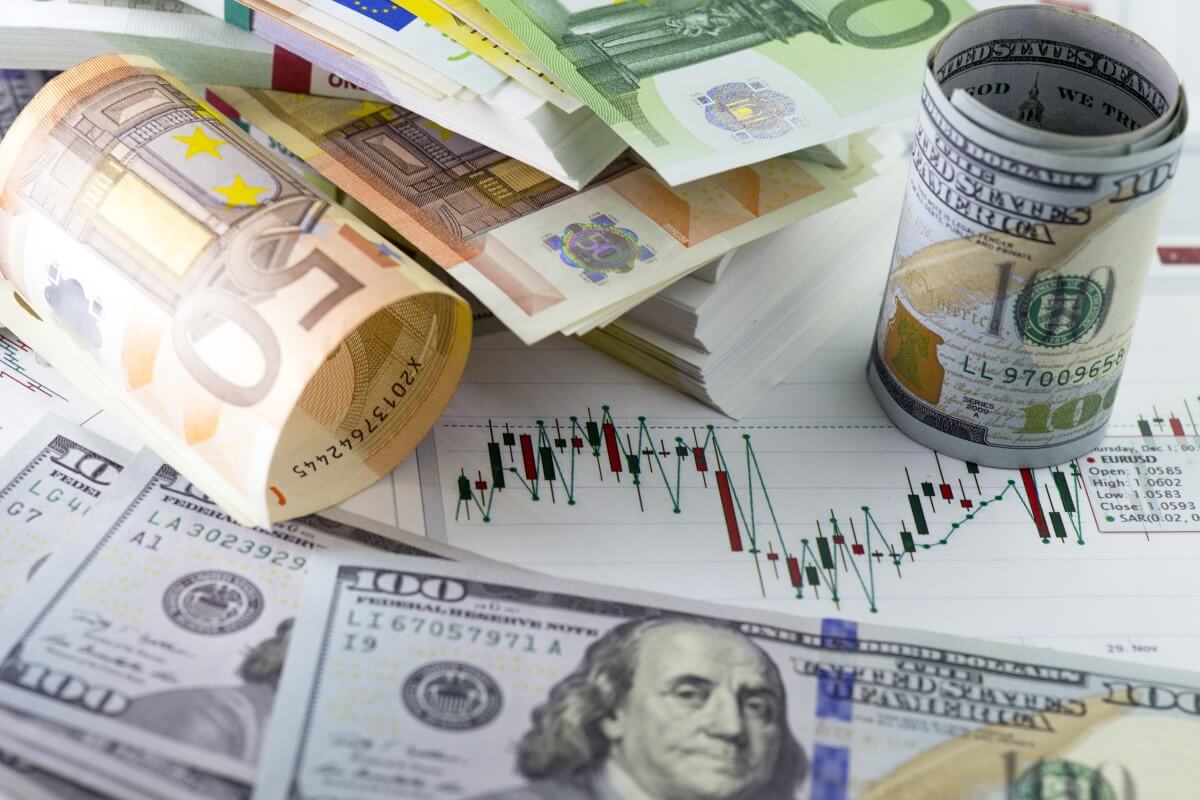The U.S. dollar rebounded towards a 20-year high on Monday. Meanwhile, the euro continued struggling around the $1.05 point. Traders are preparing for a busy week of central bank meetings, including a possible Federal Reserve interest rate hike. The common currency came under pressure after a survey showed that eurozone manufacturing output growth stopped last month. Factories struggled to source raw materials, and demand also took a knock due to steep price increases.
Furthermore, markets in London and Asia were closed for public holidays, and trading was quiet. Investors are expecting the Fed to increase rates by 50 basis points at its meetings on Tuesday and Wednesday. However, they are uncertain about how hawkish Fed Chair Jerome Powell will sound in comments after the decision.
Currently, forex markets are pricing in an aggressive run of rate hikes from the agency as it tries to tame surging inflation. That, along with an expected slower rate of European Central Bank tightening and concerns about the impact of the war in Ukraine on the eurozone economy, has sent market players scrambling for greenbacks and left the common currency at five-year lows.
Overall, the dollar index added 5% in April, showing its best monthly performance since January 2015. UBS Global Wealth Management stated that it expects the USD to stay strong against the EUR, as the geopolitical concerns and a hawkish FOMC (Federal Open Market Committee) stance will support the dollar. Moreover, short-term traders may look to sell rallies in the EUR-USD pair above $1.08.
How is the greenback trading now?
The dollar index stood at 103.36 at last, climbing by 0.1% on the day. The euro declined by 0.2% to $1.0525 on Monday. The wealth manager has also lowered its EUR-USD forecasts to $1.05 for June from a previous $1.11 and $1.06 for September, as well as $1.08 for December and $1.10 for March 2023.
On Monday, the dollar soared by half a per cent versus the Chinese yuan in offshore markets. It hit 6.6895, exchanging hands just below its strongest level since late 2020. On the other hand, the sterling dropped by 0.1% to $1.2570. The Japanese yen also tumbled down against the greenback at 129.91, but it’s off recent lows.
This week’s central bank meetings will include the Bank of England on Thursday. Investors expect the latter to raise rates by 25 basis points to 1%. There is a reasonable case to be made for central bank intervention to weaken the surging USD. However, intervention won’t have a big impact in the absence of policymakers outside the United States turning more hawkish – stated Steve Englander, head of global G10 FX Research at Standard Chartered. He doubts that intervention would have a sustained impact until the ECB and Bank of Japan offer more policy rate support.
In Asia, the Australian and New Zealand dollars initially plummeted sharply. A sell-off on Wall Street undermined risk appetite, simultaneously overshadowing the prospect of higher interest rates at home. However, the Aussie rebounded from three-month lows in European hours. It traded at $0.7074 at last, unchanged on the day. The currency shed 5.7% last month as lockdowns in China, and European recessionary fears undermined risk assets. The Kiwi dollar also plunged to its lowest level since mid-2020 at $0.6422. Overall, it had lost 6.9% in April before recovering to $0.6448.
Meanwhile, some EM currencies perked up. Which are the gainers?
Colombia’s peso managed to break a seven-day losing streak later on Friday after the central bank increased interest rates. Furthermore, Russia’s rouble skyrocketed to a two-year high against the greenback and euro. Capital controls helped the currency to weather yet another rate cut.
After dropping by 3.5% in its latest losing streak, the Colombian peso soared by 0.7%, moving away from over 11-week lows. On Friday, Colombia’s central bank board hiked the benchmark interest rate by 100 basis points to 6%, which is the highest point in almost five years.
In addition, the International Monetary Fund approved a $9.8 billion Flexible Credit Line for Colombia, reinforcing the optimistic sentiment. However, it also warned that the country remains vulnerable to external risks, such as inflationary pressures and a spike in risk premia.
The Mexican peso soared from a six-week low, boosted by preliminary data. The latter showed the country’s economy grew in the Q1 from the previous three-month period for the first time in three quarters.











